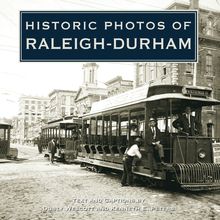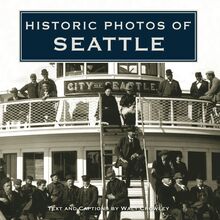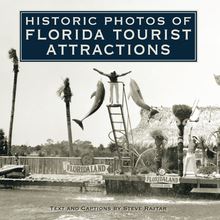Historic Photos of Broadway , livre ebook
272
pages
English
Ebooks
2008
Vous pourrez modifier la taille du texte de cet ouvrage
Obtenez un accès à la bibliothèque pour le consulter en ligne En savoir plus
Découvre YouScribe en t'inscrivant gratuitement
Découvre YouScribe en t'inscrivant gratuitement
272
pages
English
Ebooks
2008
Vous pourrez modifier la taille du texte de cet ouvrage
Obtenez un accès à la bibliothèque pour le consulter en ligne En savoir plus
Publié par
Date de parution
18 juin 2008
Nombre de lectures
1
EAN13
9781618586063
Langue
English
Poids de l'ouvrage
4 Mo
Publié par
Date de parution
18 juin 2008
Nombre de lectures
1
EAN13
9781618586063
Langue
English
Poids de l'ouvrage
4 Mo
Turner Publishing Company 200 4th Avenue North • Suite 950 Nashville, Tennessee 37219 (615) 255-2665
www.turnerpublishing.com
Historic Photos of Broadway
New York Theater, 1850–1970
Copyright © 2008 Turner Publishing Company
Unless otherwise noted, all photographs are copyright The New York Public Library, Astor, Lenox and Tilden Foundations. For copies and permission to use, contact Photographic Services and Permissions at 212.930.0091 or by email permissions@nypl.org
The name “The New York Public Library” and the lion logo are registered trademarks and the property of The New York Public Library, Astor, Lenox and Tilden Foundations and may not be used without the prior written consent of the Library.
All rights reserved.
This book or any part thereof may not be reproduced or transmitted in any form or by any means, electronic or mechanical, including photocopying, recording, or by any information storage and retrieval system, without permission in writing from the publisher.
Library of Congress Control Number: 2007929566
9781618586063
Printed in the United States of America
08 09 10 11 12 13 14 15—0 9 8 7 6 5 4 3 2 1
Table of Contents
Title Page Copyright Page ACKNOWLEDGMENTS A Note from the New York Public Library for the Performing Arts PREFACE PRE- AND PROTO-BROADWAY - (1840–1870) THE FIN DE SIÈCLE APPROACHES - (1880–1910) TESTS, TRIALS, AND TRANSITIONS - (1910–1920) THE ROAR OF THE POSTWAR GREASEPAINT - (1920–1930) SING ME A SONG OF SOCIAL STUDIES - (1930–1940) A PAX AMERICANA ON YOUR HOUSES - (1940–1950) GOLDEN ERA, POST-BROADWAY, AND BEYOND - (1950–1970) NOTES ON THE PHOTOGRAPHS BIBLIOGRAPHY INDEX OF ACTORS, PLAYS, AND THEATERS
ACKNOWLEDGMENTS
Historic Photos of Broadway is the result of the cooperation and efforts of many individuals, organizations, and corporations. It is with great thanks that we acknowledge the valuable contribution of the following for their generous support:
This volume would have been impossible without the support of colleagues, friends, and family. Deepest thanks to my publisher, Todd Bottorff, whose tireless efforts on behalf of this volume afforded me this opportunity.
My heartfelt gratitude to Turner Publishing’s staff: Steven Cox, my editor, who applied a terrific pair of eagle eyes to the style, voice, tone, and spirit of this book; Heather Watson, project assistant, who shepherded the promotional copy; David Latta, project designer, whose peerless design sense brought 240 images to life; and Gene Bedell, production manager, whose unflappable grace and professionalism during the production process was a gift to us all.
The staff of the Billy Rose Theatre Collection, New York Public Library for the Performing Arts has been a consistent source of insight and information. Heading the list is photo librarian Jeremy Megraw, whose ceaseless efforts and contributions cannot be overstated. Thanks, too, to the library’s excellent staff: Roderick L. Bladel, Christopher J. Frith, Christine A.
Karatnytsky, Annette C. Marotta, Louise Martzinek, Stephen C. Massa, Karen Nickeson, and Olive T. Wong. Notes of appreciation to: Brian Scott Lipton, my longtime friend and mentor, for overall advice; Erik Haagensen, my colleague and friend at Back Stage, for invaluable information on musical theater and for helping me to identify many individuals in photographs; Sue Viera of U.P.S. for finding a needle in a haystack; and the staff of the Village Copier. Special thanks to Don Wilmeth, Brown University Professor Emeritus, whose mentorship and friendship remain invaluable to me.
Very special thanks to Stephen Van Gorden, whose enthusiasm, research, organization, patience, prescience, gut instincts, untapped knowledge, and friendship proved instrumental to this book.
The love of my parents, Edward and JoAnn Jacobs, my grandmother, Helene Blank, and especially my partner, Ken Koranyi, always kept me grounded, gratified, and inspired.
To the memory of my grandfather, Herbert M. Faitt, whose greatest gift to me was a lifelong love of history.
A Note from the New York Public Library for the Performing Arts
The Billy Rose Theatre Division, New York Public Library for the Performing Arts, is the world’s largest archive devoted to the documentation of theater. Its holdings number around 9 million items and about one-third of them are photographs.
A good writer with a sharp eye and a gift for adjectives could describe in detail what he saw last night onstage at the Bijou. But accurate as that description might be, every reader would visualize it differently. Not so with a photograph.
Although, in the last several years, technology has provided easy means for photographic prevarication, this was not always the case; in early photographs, the photographer’s greatest sin might have been air-brushing a double chin or two.
Fortunately, most of the three million or so photographs in the Billy Rose Theatre Division are, decidedly, “early” and it is fairly certain, visually trustworthy. The 240 images in this book have been drawn preponderantly from three separate collections of photographs held by the Billy Rose Theatre Division: the White Studio Collection, the Vandamm Collection, and the Friedman-Abeles Collection.
The White Studio photographed almost 90 percent of all live performance in New York between 1904 and 1936. More than 100,000 images provide, in many cases, the only existing visual documentation of plays, vaudeville acts, concerts, and dance during that unusually rich period of American performing arts.
These photographs are highly prized by theater historians around the world.
By the time the White Studio shut its doors in 1936, the Vandamm Studio had been nipping at its heels for some years and was now to the fore in the field of theater photography. From the late 1920s through the early 1960s, Florence and Tommy Vandamm photographed virtually every important show that opened in New York and every performer who appeared onstage—nearly 50,000 images of more than 8,000 shows. The Billy Rose Theatre Division acquired this matchless collection from Florence Vandamm shortly before she retired in 1961.
In 1992, the Theatre Division acquired the largest of its collections of photographs. The Friedman-Abeles Studio dominated theatrical photography from the mid-1950s through the mid-1970s, and, by the time it closed shop, the studio had accumulated nearly 600,000 images. During its twenty-year run, the Friedman-Abeles Studio photographed not only thousands of legitimate stage productions—in New York and around the country—but also hundreds of special events such as opening night parties and the Tony Awards. This collection is further enriched by thousands of rehearsal shots and back-stage candids.
Each of these three collections of photographs is in great demand by researchers because, together, they constitute a unique and reliable visual record of theater in New York for three-quarters of the twentieth century. The Billy Rose Theatre
Division is proud to be the custodian of this unrivaled photographic archive and grateful to Leonard Jacobs and Turner Publishing for helping us share the glorious history of New York theater.
PREFACE
I write this in the wintertime, when the New York City light is substantively different from its appearance at other times of the year. Especially below 14th Street, in the older, more history-rich sections of Manhattan, in addition to being genuinely beautiful, the city’s architecture exerts impulses toward introspection and retrospection. I ponder the way it all must have looked 100 or 150 years ago, or even earlier. I shut my eyes and try listening for long-vanished sounds—for the metronomic clop-clop clop-clop of horses on cobblestone.
And as the theater is my first love, I listen especially for the sounds of the stage: the courtly applause of immaculately dressed gentlemen; the high-pitched giggle of matinee ladies in the full tilt of rapture with a play. I listen for the dainty feet of ruffle-and-lace dancers scurrying from tiny, chilly dressing rooms to the metal stairs they clack down in unison as they assume their positions behind the curtain. I listen intently for the Shakespeare of Booth and of Barrymore, of dramatic speech once considered brilliant and perhaps construable as such today. I yearn to hear the startled reactions of the audience to everything that was thrillingly new: hearts beating faster as chorines, perfect legs for miles, bedazzled in their perfect choreographic harmony; gasps at the realistic, naturalistic social dramas that dragged controversial social topics out of cigar-filled drawing rooms, repackaging them into the DNA of supreme drama; the pleasant and satisfied humming of melodies direct from the musical theater, ever-mystical in its ability to whisk one away from daily cares.
Opening my eyes, I remain below 14th Street. It’s still winter, and few traces of the New York theater of a century or more ago survive today. Taking a quick subway ride uptown, to the hurlyburly of Times Square, change is everywhere in evidence—so many brainless, bland, blah-looking skyscraper condos replacing beloved watering holes, rehearsal spaces, eateries, and apartments and even so many of the theaters, demolished long ago, that helped to make Broadway the epicenter of the theatrical world. We can close our eyes all we want, listen all we want, but finally we must awaken to our present world. We must know that all we really have is our imagination, our ability to picture things as they were in the New York light, to not forget what once stood where.
This is why photography for me is a window into a theater world of people, places, and plays I can never completely know. Through photography one can get pretty close.
And that’s why I have written this book. As curator Bob Taylor details in his essay, the Billy Rose Theatre Division, The New York Public Library for the Performing A














